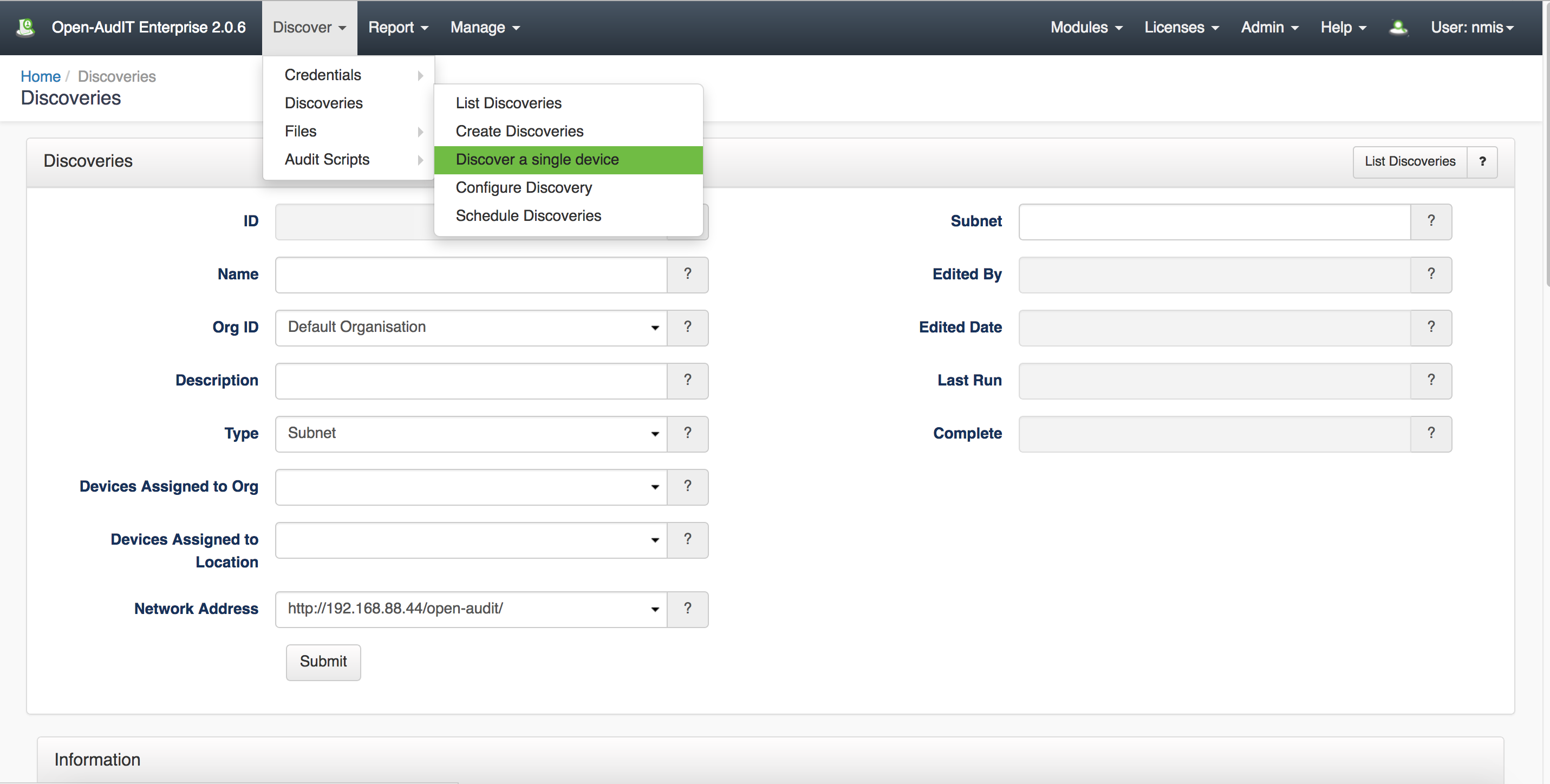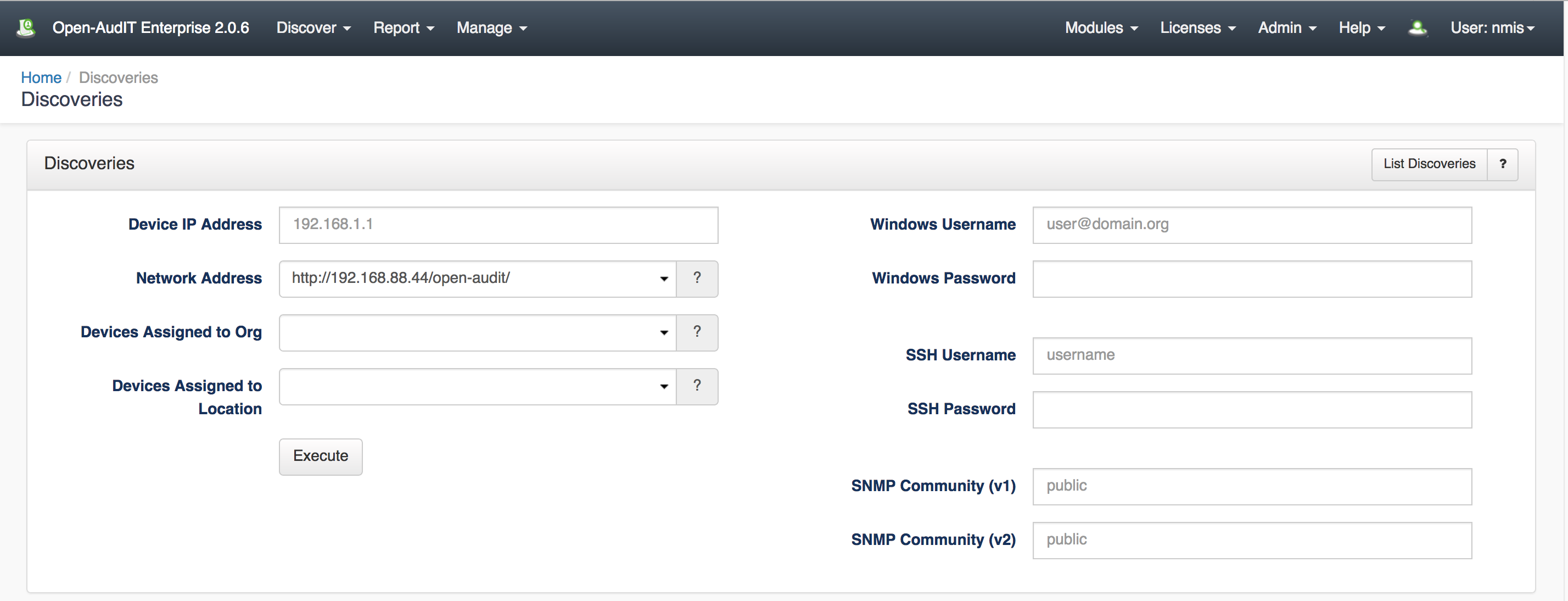Installation and setup.
Installation is easy and there are a few different ways to go about doing it depending on the operating system or VM software you choose to use. Follow the links below that best suite your situation.
NMIS8 Virtual Appliance Bundle Installation - Getting Started - NMIS8 Virtual Appliance Bundle Installation
Windows Installation - Windows - Installing
Linux Installation - Linux - Installing or Upgrading
Using Opmantek Installer - The Opmantek Installer
Server requirements.
Ensure the server meets the specified requirements.
Open-audit and Nmap.
Nmap is required for Open-Audit to run. If not using the Virtual Appliance Bundle (link above) then, below is a link that shows how to install it if needed.
Creating Credentials.
After installing OpenAudIT, the first step is to create the credentials needed to gain administrative rights to your server.
Setup your default configuration items.
Open-AudIT Default Configuration Values and Description
Make sure (if you wish to use Discovery), that you have set your values for default_* items.
Discover and audit devices.
After everything is installed and configured correctly and you have set your credentials, it is time to start your first audit. You can do this in a few different ways (shown below) however, it is best to see if OpenAudIT is up and working correctly before trying to audit multiple machines or devices.
To ensure everything is set up correctly start out by seeing if you can audit a single, known machine before moving on to discovering entire subnets.
Discover a single device.
With this feature you can audit a single machine to get an idea of how OpenAudIT works. Furthermore, you can use this to add a single device without performing a full discovery on a subnet.
Navigate to the menu and go to Discover -> Discoveries -> Discover a single device
Next, enter the Network Address of the machine you wish to audit and ensure you have added the credentials for this device. As displayed below there are places to enter credentials using a Windows username, SSH, or SNMP Community. Choose the option that best suites your situation. After all the required information is entered press the execute button for the results.
OpenAudIT allows you to import multiple devices by using discovery on a subnet.
How to use Open-AudIT Discovery on a Subnet
OpenAudIT also allows for auditing by using a script.
How to audit a subnet using a script
Discover your Active Directory domain.
How to use Active Directory Discovery
Creating Roles.
The Roles endpoint allows you to create and manage the set of permissions(Create, Read, Update, Delete).
Creating a Baseline.
Being able to determine which machines are configured in the same way is a major part of systems administration and auditing. Follow the link below to walk you through setting this up.
FAQ.

